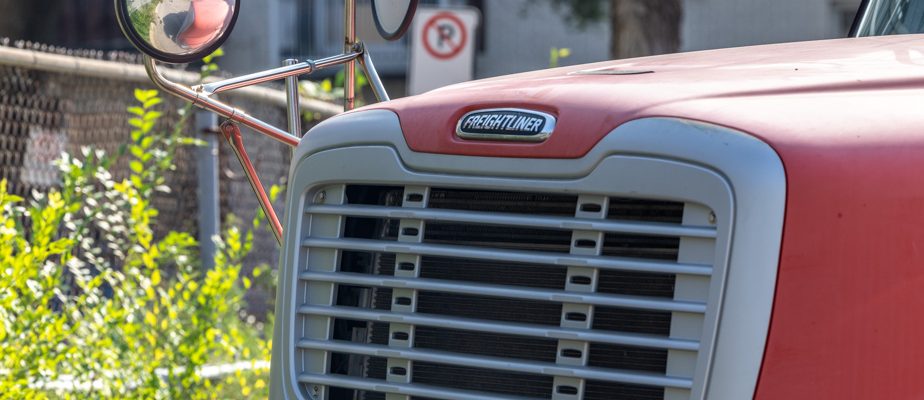Tractors and straight trucks built in North America, with their rear-set cabs and prominent hoods, are often poorly designed with regard to direct visibility, experts consulted by The Press. Should they be fitted with front view mirrors straight out of the factory?
In Europe, almost all heavy vehicles have a forward cabin and a flat front, which reduces the frontal blind spot. The fact remains that since 2004, all new trucks of 7.5 tonnes or more must be fitted with at least one rear view mirror – unless they meet strict direct visibility criteria – to circulate in the Union. European.

PHOTO HENRIK KETTUNEN, BLOOMBERG ARCHIVES
In Europe, almost all heavy vehicles have a forward cabin and a flat front, which reduces the frontal blind spot. In our photo, trucks parked in Finland.
On this side of the border, Transport Canada has jurisdiction over vehicle construction standards.
The federal agency did not grant us an interview, but it explains in a long email that it is carrying out a research program on vehicle blind spots and consultations on technologies improving safety. “Truck designs and usage vary significantly between urban and rural settings, making a one-size-fits-all solution such as requiring the installation of some type of front mirror impractical,” a spokeswoman wrote.
Transport Canada is instead focusing on the design of mandatory mirrors, on driver assistance technologies and on improving the driver’s direct vision.
For example, trucks with sloping hoods, in addition to being more aerodynamic, reduce the frontal blind spot. Several models have been refined in recent decades.
A fragile argument
“Although adding mirrors [antéviseurs] can improve indirect vision for drivers, they have the negative effect of reducing direct vision,” explained a spokesperson to Quebec Journal in 2010.
Since this statement from Transport Canada, no fewer than 23 pedestrians have died in Montreal in a situation that could have been prevented by additional mirrors, according to our investigation.
In 2013, after the death of a 51-year-old woman under the wheels of a dump truck, a coroner wrote: “Transport Canada emphasizes that “the addition of anti-mirror type mirrors would probably have allowed the driver to see the pedestrian and avoid the collision.” »
“The mirrors themselves can create blind spots for the driver, along with the vehicle hood and the front and center pillars,” reaffirms Transport Canada in a document published in 2018.
“It becomes a choice,” notes Sébastien Bédard, engineer at the Ministry of Transport of Quebec (MTQ). Honestly, I don’t think Transport Canada had studied the issue [en 2010], but there is a basis for what the spokesperson said: this type of mirror could create a very specific blind spot. In my opinion, the cost-benefit makes it much better to have them. »
Mr. Bédard explains that a simple movement of the head is enough to compensate for a blind spot caused by a mirror, which is not true for the blind zone caused by the hood.
Julien Dufort, an engineer at Polytechnique Montréal, sees no dilemma: he and his team have found an adjustment method that virtually avoids any blind spots.
Focus on technology?
Another issue cited to favor the voluntary installation of front view mirrors: “We did not want to limit technological development,” explains Mr. Bédard, of the MTQ. When we get to around 2019-2020, there are a lot of systems developing. Making equipment obligatory sucks the whole thing a bit. [l’attention]. »
Julien Dufort, engineer at Polytechnique Montréal, does not side with this argument: “In the transition [technologique], it is never too late to impose antevisors, he believes. There will always be a fleet of old vehicles that will not be able to integrate new technologies. It’s going to cost too much. » And then, he points out, “car mirrors have never prevented the development of other safety systems”.
The European directive also allows a camera system to replace certain classes of mandatory mirrors, in particular front mirrors.
